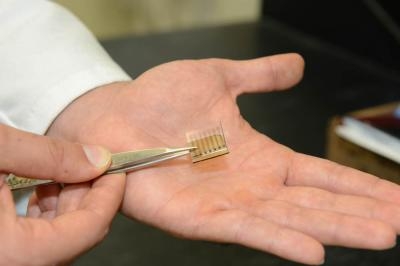Stanford researchers have discovered a way to manufacture flexible, recyclable and comparatively cheap solar cells. Though the cells currently operate at a much lower efficiency, the breakthrough holds great potential for the future of solar energy.
Chemical engineering professor Zhenan Bao recently announced the discovery of the first all-carbon solar cell, which demonstrates greater flexibility and potential for cost-friendliness than traditional silicon-based solar cells.
In 2005, the semiconductor and solar panel industries began to compete for silicon, resulting in the former being unable to afford silicon at the demanded price. This breakthrough may provide relief to semiconductor companies.
The all-carbon solar cell consists of an active layer of C60 (a form of carbon) and carbon nanotubes sandwiched between conductive and transparent n-type doped cathode and graphene-based anode which allows for the penetration of sunlight to excite electrons.
Although previous research groups from MIT have also made carbon-based solar cells using carbon nanotubes, they were only able to apply these nanotubes to the active layer. According to Michael Vosgueritchian, a second-year graduate student and a co-author of the research paper, this is the first solar cell entirely made out of carbon.
“[MIT researchers] are still using metal for electrodes. We replace them with all carbon electrodes, and lots of challenges had to be overcome before we succeeded,” Vosgueritchian said.
The project builds on several discoveries by Bao’s group over the past six years, such as developing transparent and conductive graphene electrodes and developing n-type dopants to make carbon cathodes. The effort to combine all these parts together to make an all-carbon solar cell began about one and half years ago when Stanford’s Global Climate and Energy Project (GCEP) funded the project.
According to Bao, a patent has been filed through GCEP for the all-carbon solar cell, which has two main advantages over traditional solar cells. The first is the material’s flexibility.
“Carbon materials can be bent, and some can even be stretched, so their mechanical properties are more robust and flexible for them to be put on flexible substrates,” Bao said.
Second, carbon solar cells can better contribute to a low-cost sustainable energy system. Conventional solar cells use silver and indium tin oxide as electrodes, materials that are scarce and toxic.
“What’s really exciting about an all-carbon solar cell is that carbon is plentiful,” said Sally Benson, director of the GCEP. “The other thing that is really neat about carbon is that it’s a recyclable material. With carbon-based solar cells, you can even combust it.”
Carbon can also withstand high temperatures and pressure, meaning that it can be used in more extreme conditions.
Despite the promising future applications of all-carbon solar cells, one of the main problems is that this prototype achieves an efficiency of 0.1 percent, compared to 20 percent from silicon solar cells.
Additionally, light absorption in carbon cells comes primarily from the near infrared spectrum due to the narrow diameter range of carbon nanotubes, meaning that the whole spectrum of sunlight cannot be absorbed. Vosgueritchian is currently working in Bao’s research group to experiment with different carbon nanotubes to improve the efficiency of the solar cell.
However, scientists are optimistic about improving carbon solar cells’ efficiency level. According to a recent MIT study published in ACS Nano, carbon solar cells demonstrate an untapped potential for improving the efficiency level to above 1 percent.
“First of all we have to fix the issue with our electrode, and we can improve our efficiency up to 0.45 percent,” Vosgueritchian said. “Then, if we can use different types of carbon nanotubes to improve our absorbance, we can easily improve our efficiency level above 1 percent.”
Despite some drawbacks, the discovery opens up new possibilities in the field of solar cell research.
“We need to dramatically improve the materials and improve the process for making the devices, [and we need] new ideas to engineer the device to get the best performance of the carbon materials,” Bao said. “This is only the beginning of a new research direction.”
